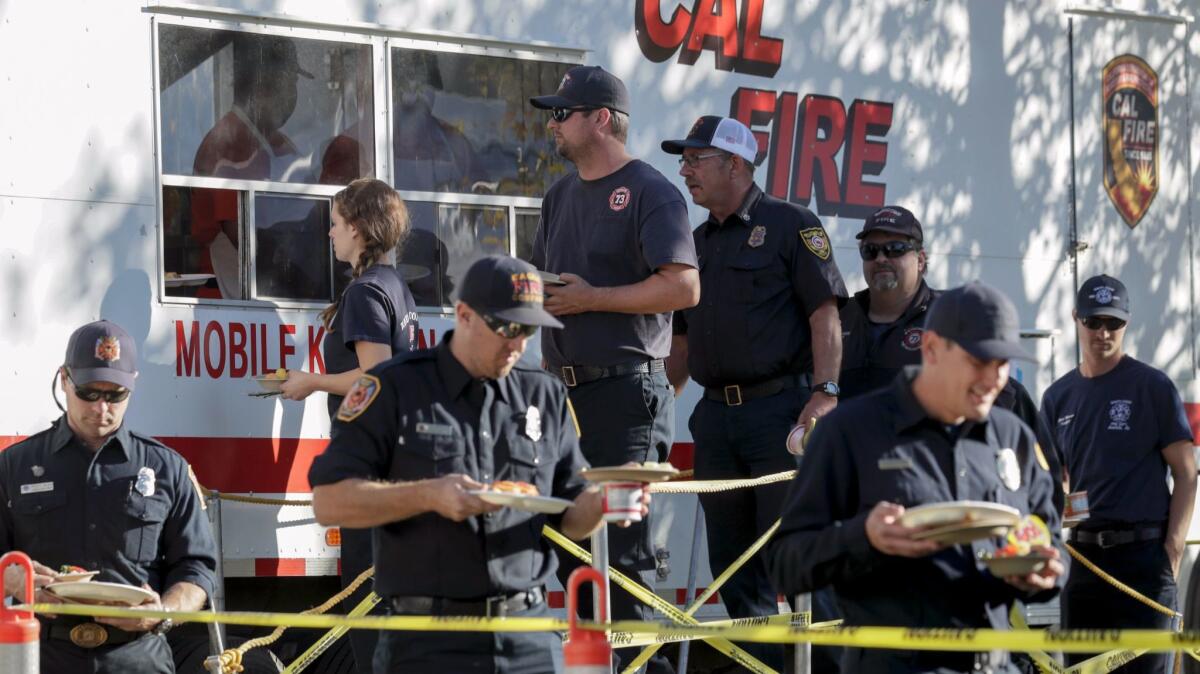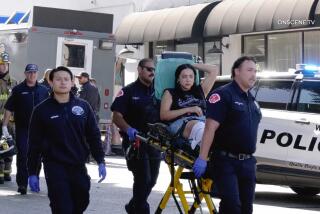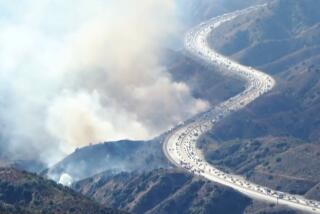What do hungry firefighters eat for breakfast? Try 10,000 eggs and 4,500 strips of bacon

As firefighters continue to battle the Creek fire Thursday, hundreds of workers are holding down the fort — and fork — at base camp.
On the third day of the fire, firefighters, inmates and support personnel lined up at Hansen Dam Recreation Center at 5 a.m. to grab breakfast.
Inmate crews had helped to prepare and serve nearly 2,000 meals, with prep beginning at midnight.
“The chow for this morning is going to be eggs and those eggs aren’t going to be just your one or two you normally have at home,” said Capt. Chris Reade of L.A. County Fire Department.
“We have 10,000 eggs being prepped here this morning, 9,000 sticks of French toast and 4,500 pieces of bacon,” Reade said. “That’s just for this morning.”
More than 1,500 personnel are working the Creek fire, with some starting their day with the 5 a.m. breakfast.
There are several hundred inmates who help with preparing and serving food, and also working on the fire line.
“They’re a huge intricate part of this fire camp and making sure it runs and making sure everyone gets fed,” Reade said.
“This is a unified fire, so it’s not just the firefighters showing up to put out the fire. It trickles all the way down to all these other individuals.”
Some firefighters grabbed breakfast and then lined up elsewhere to grab a sack lunch to take out into the field. These 10,000-calorie lunches, Reade said, make for “the biggest lunch bag you’ve ever seen.”
One of the brown bags being handed out Thursday included a turkey sandwich, a pickle, Nutella, Smucker’s Uncrustables sandwiches, a chimichanga, protein shakes, beef jerky and Tapatio.
“You don’t go to school and get a lunch like that,” Reade said. He said this should last them for lunch and dinner. “They’re working 24 hours so they’re not actually coming back here at nighttime,” Reade said.
“Some people think, ‘You’re feeding these guys a bunch of junk food,’ ... but they’re high-calorie meals to be able to replace what guys are burning out there... Sometimes you’ve got to give them a little bit of junk food.”
Reade added, with a laugh, that he tries to steer clear of the 5-pound brown bag lunches.
“I try not to eat them, because you just sit here and get fat,” Reade said. “We all don’t have the opportunity to get our morning workout in.”
Not too far from the chow line, along trailer row, Randy Smith and Ronnie Frazee, both telecommunications technicians for the California Office of Emergency Services, worked on radio repair.
They began working at 5 a.m., focused on radio cloning to ensure that firefighters’ hand talkies were all using the right frequency — especially important when individuals come from all over the state.
When firefighters arrive, they will plug another person’s radio into their own and push a button that uploads the profile for this incident. This way, everybody can be on the same page. They’ve cloned hundreds of radios for this fire and stressed the danger when firefighters can’t communicate.
“That’s how people die,” Frazee said. “If you can’t talk, you don’t know the fire’s coming toward you.”
More to Read
Sign up for Essential California
The most important California stories and recommendations in your inbox every morning.
You may occasionally receive promotional content from the Los Angeles Times.











